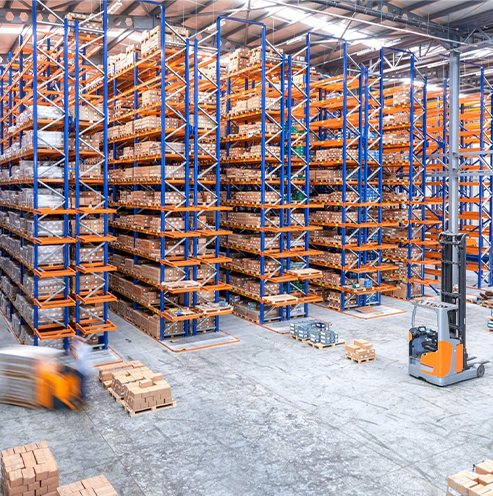food stretch film
The Versatility and Importance of Food Stretch Film in Food Preservation
In the fast-paced world of the food industry, maintaining freshness and extending the shelf life of products is paramount for both producers and consumers. Food stretch film, also known as cling film or plastic wrap, has emerged as a crucial tool in food preservation, offering numerous benefits that enhance food storage and transport. This article explores the various functions, advantages, and best practices associated with food stretch film, highlighting its significance in our daily lives and the food industry at large.
Understanding Food Stretch Film
Food stretch film is a thin plastic film typically made from polyvinyl chloride (PVC) or low-density polyethylene (LDPE). It is designed to adhere to surfaces through its cling properties, which makes it ideal for wrapping food items securely. The film can stretch to fit various shapes and sizes, providing a tight seal that helps to prevent air and moisture from entering, which are two primary factors that contribute to food spoilage.
Preservation of Freshness
One of the most significant advantages of food stretch film is its ability to preserve the freshness of food items. By wrapping fruits, vegetables, meats, and leftovers tightly, it creates an airtight environment that can inhibit the growth of bacteria and mold. This is particularly important in preventing oxidative reactions that cause food to lose flavor and nutritional value. For instance, wrapping cut fruits or vegetables in stretch film can help retain their moisture and crispness, allowing consumers to enjoy them longer without compromising quality.
Convenience and Efficiency
Food stretch film is not only effective in preserving food but also incredibly convenient for everyday use. Unlike rigid containers, stretch film is lightweight, easy to handle, and can be applied quickly. It conforms to the shape of whatever it is wrapping, making it suitable for irregularly shaped items. Whether you are storing a half-eaten sandwich, a bowl of leftover pasta, or a platter of cheese, food stretch film offers a hassle-free solution that saves time and space in the refrigerator.
In commercial settings, the efficiency of food stretch film extends to bulk storage and transportation. It is commonly used in warehouses and food distribution centers to wrap pallets of products securely, reducing the risk of contamination and spoilage during transport. This not only protects the products but also helps streamline the logistics process throughout the supply chain.
Sustainability Concerns
food stretch film

While food stretch film has many benefits, it also raises discussions regarding environmental impact. The majority of stretch films are single-use plastics, which contribute to the global plastic waste crisis. However, advancements in technology have led to the development of biodegradable and compostable alternatives that can fulfill similar roles without harming the planet. Consumers and businesses are increasingly encouraged to seek out these sustainable options, as well as consider reusable wraps made from beeswax or silicone as alternatives to traditional stretch film.
Best Practices for Using Food Stretch Film
To maximize the benefits of food stretch film, it is important to use it correctly. Here are some best practices
1. Cleanliness Ensure that the food items being wrapped are clean and dry. Excess moisture can lead to mold growth, which can spoil the food even when wrapped.
2. Proper Sealing Apply pressure while wrapping to ensure that the film adheres well to the food item or container. This creates an effective barrier against air and moisture.
3. Storage Conditions Keep wrapped items in a cool, dry place or refrigerate them as necessary. Avoid exposure to excessive heat, as this can weaken the film.
4. Recycling Information Always check local recycling guidelines regarding plastic films, as not all regions accept them. Consider using compostable films where available.
Conclusion
Food stretch film is an invaluable tool in the realm of food preservation, offering benefits that are essential for both home cooks and food industry professionals. Its ability to keep food fresh, combined with its convenience, makes it a staple in kitchens around the world. As the world becomes more conscious of environmental issues, embracing sustainable alternatives will ensure that we can continue to enjoy the benefits of food stretch film while minimizing our ecological footprint. By understanding its uses and potential impacts, we can make informed choices that benefit not only our kitchens but also our planet.
-
The Best Uses for Small Trash Bags in Daily LifeNewsJul.01,2025
-
Stylish Reusable Grocery Bags TrendsNewsJul.01,2025
-
Shipping Advantages of Using Bubble Envelopes BulkNewsJul.01,2025
-
How Compostable Mailing Bags Reduce Environmental ImpactNewsJul.01,2025
-
Environmentally - Friendly Bulk Poly MailersNewsJul.01,2025
-
Eco Friendly Custom Laminated Tote BagsNewsJul.01,2025
-
Have the freedom of customizing your custom mailers any way you want! Our dedicated packaging support will help deliver you the mailing experience you need to elevate your shipping experience to the next level! Start making a strong impression on your customers and stand out from your competitors! -
LIYA uses high quality raw materials which directly purchased from large enterprises domestic and overseas such as PetroChina, Sinopec, Sabic, Equate, ExxonMobil, Dow Chemical, Total, and Borouge, ensuring the price advantage and quality of the raw materials. -
LIYA uses high quality raw materials which directly purchased from large enterprises domestic and overseas such as PetroChina, Sinopec, Sabic, Equate, ExxonMobil, Dow Chemical, Total, and Borouge, ensuring the price advantage and quality of the raw materials.





